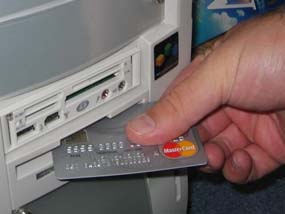I buy many things online. More and more people are doing the same.
E-Commerce is usually one of the lowest cost and highest growth channels for a retailer.
There are many advantages to the consumer: Shopping online can give you access to a wider array of products, at cheaper prices, and with more convenience than shopping in the real world. But there is also a few drawbacks: you can’t touch the items, play with them, ask a salesperson for more information, and you’re less likely to see random things you might also like on the shelves or in display cases.
Shopping takes two forms: Focused and Unfocused
Focused shopping is when you know what it is you want before you buy it. Perhaps not the exact model, but close enough. Focused shopping is when you need to buy a new pair of jeans, or you want a flat screen TV, or you’ve run out of toothpaste. Focused shopping is when you buy something you need or something you’ve decided you want badly enough to buy.
Unfocused shopping is when you walk by a mannequin, and think “that’s a GREAT jacket!”, or when Amazon’s recommendations pop up something you buy as a result. Unfocused shopping is when you buy something you probably don’t need, and didn’t know you wanted until the vendor exposed you to it. The vendor is selling to you.
Online shopping lends itself very well to focused shopping. As a vendor, to improve your focused shopping volume you need to do three things: excellent SEO, usable and trustworthy website design, and simple purchase flow. Good SEO will get the focused shopper to the product they want on your site (instead of your competitors), a usable and trustworthy website design will keep them from clicking away, and a simple purchase flow makes it easy for them to buy from you and decreases abandonment rates. It’s a well understood area to improve in.
However, online shopping generally lags in pulling in unfocused shopping dollars. It’s harder to do online, where vendors categorize and segment products and unsolicited exposure is hard to come by and usually just SPAM.
A few online retailer do unfocused shopping better than most: Amazon’s recommendation system is pretty impressive. When I visit Amazon.com in order to do some focused shopping, they get other products in front of me, and by basing these promoted products on my past purchasing history, they are often able to show me tempting products. Other vendors, such as Ulta.com, are leveraging 3rd party recommendation systems such as ATG Recommendations or DirectedEdge to offer similar functionality on their sites.
Finding new and innovate ways to capture unfocused shopping sales and dollars is the new frontier for eCommerce. With the economy down, it will be a difficult but critical area to grow for many vendors. I have a few ideas about how to do this (look for an upcoming post about one idea), but I’d love to hear your thoughts!

Leave a Reply